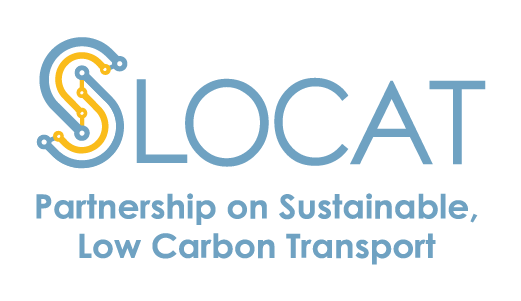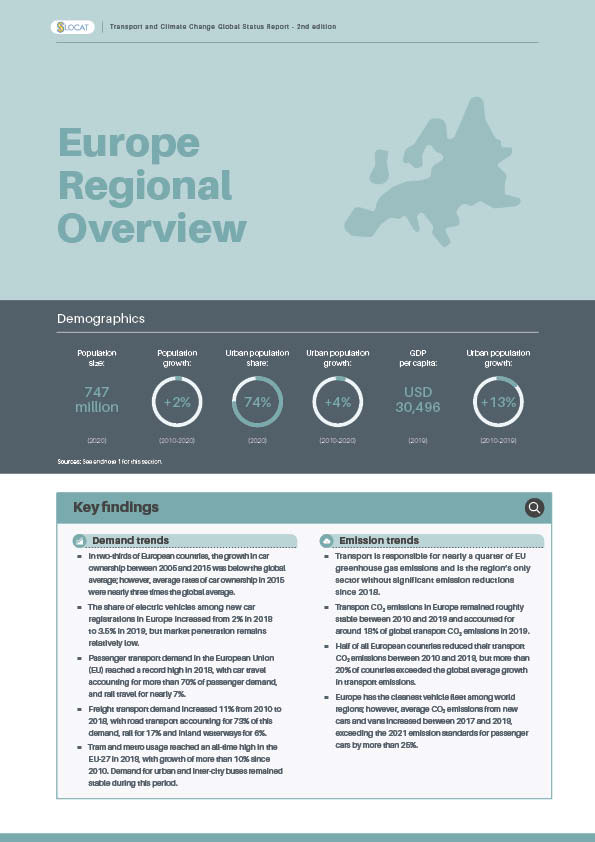Europe Regional Overview
Population size
(2020)
Population growth
(2010-2020)
%
GDP growth
(2010-2019)
%
Total vehicle sales
growth (2010-2019)
%
Total transport CO2
emissions (2019)
Share of global transport
CO2 emissions (2019)
%
Demand for freight and passenger transport in Europe grew at relatively low rates (1-2%) in 2018, but the region’s per capita transport emissions remained high (although still well below North America’s). Europe’s transport networks are well developed, with a rich set of public transport systems, walking and cycling infrastructure, and demand management policies. Transport policies aimed at climate change adaptation are also taking shape.
The European Green Deal, which aims to align EU policies with the region’s objective to achieve climate neutrality by 2050, includes the goal of “accelerating the shift to sustainable and smart mobility”. This led to the adoption in 2020 of a strategy and action plan that aims to provide more affordable, safe, competitive, accessible, healthier and cleaner mobility options, with the goal of cutting EU emissions from road, rail, aviation, and waterborne transport 90% by 2050. Despite the significant effort within Europe to implement planning approaches to ambitiously reduce transport-related emissions, the region has demonstrated few achievements in effective climate change mitigation.
The COVID-19 pandemic has impacted European transport in numerous ways. In the early months of 2020, most European countries experienced sharp declines in air passenger transport, and the region’s long-distance, regional and international passenger rail services also plummeted.
Key Findings
-
Demand Trends
In two-thirds of European countries, the growth in car ownership between 2005 and 2015 was below the global average; however, average rates of car ownership in 2015 were nearly three times the global average.
Figure 1.
Growth in car ownership in Europe, 2005-2015
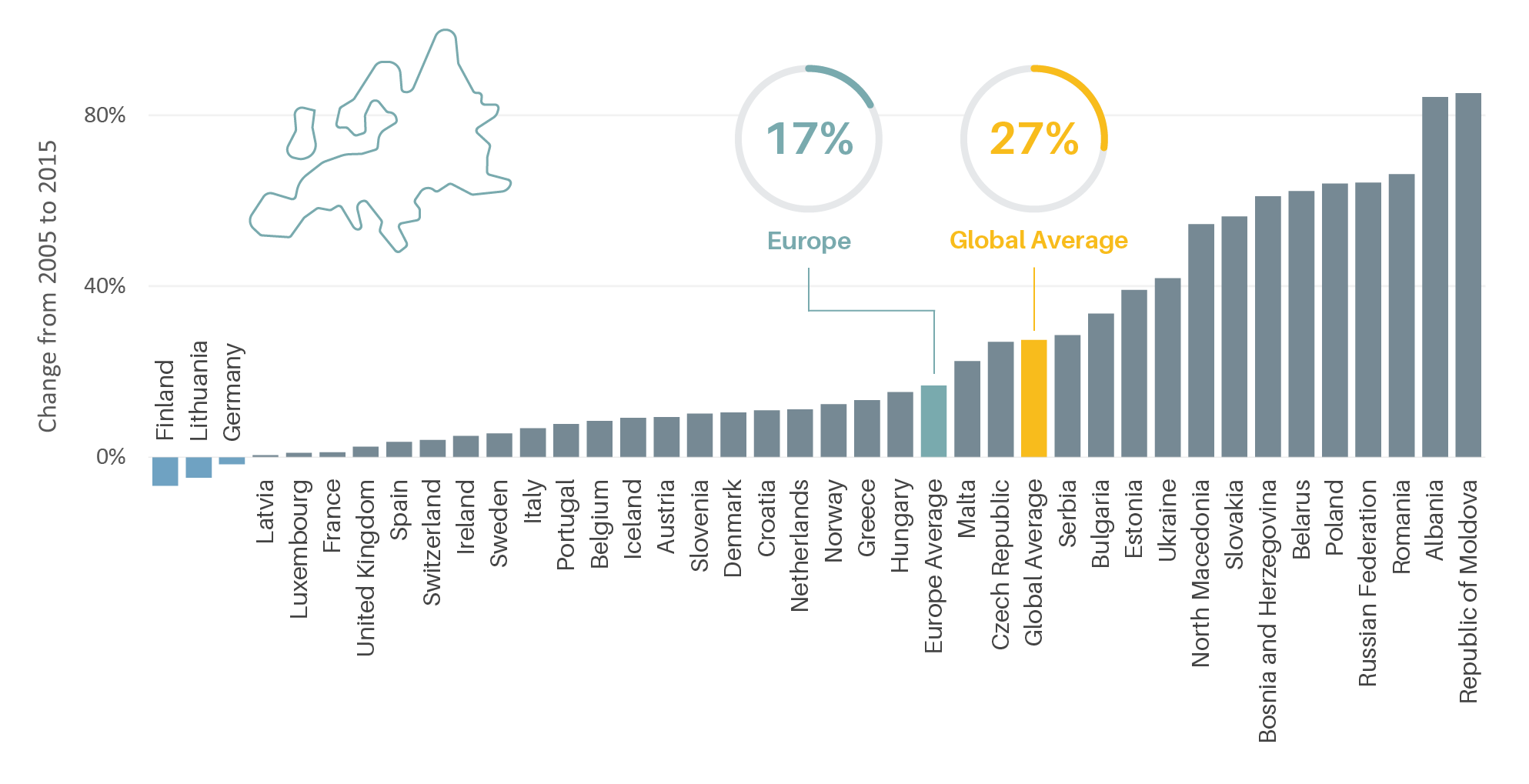
Figure 2.
Car ownership rates per 1000 people in Europe, 2015
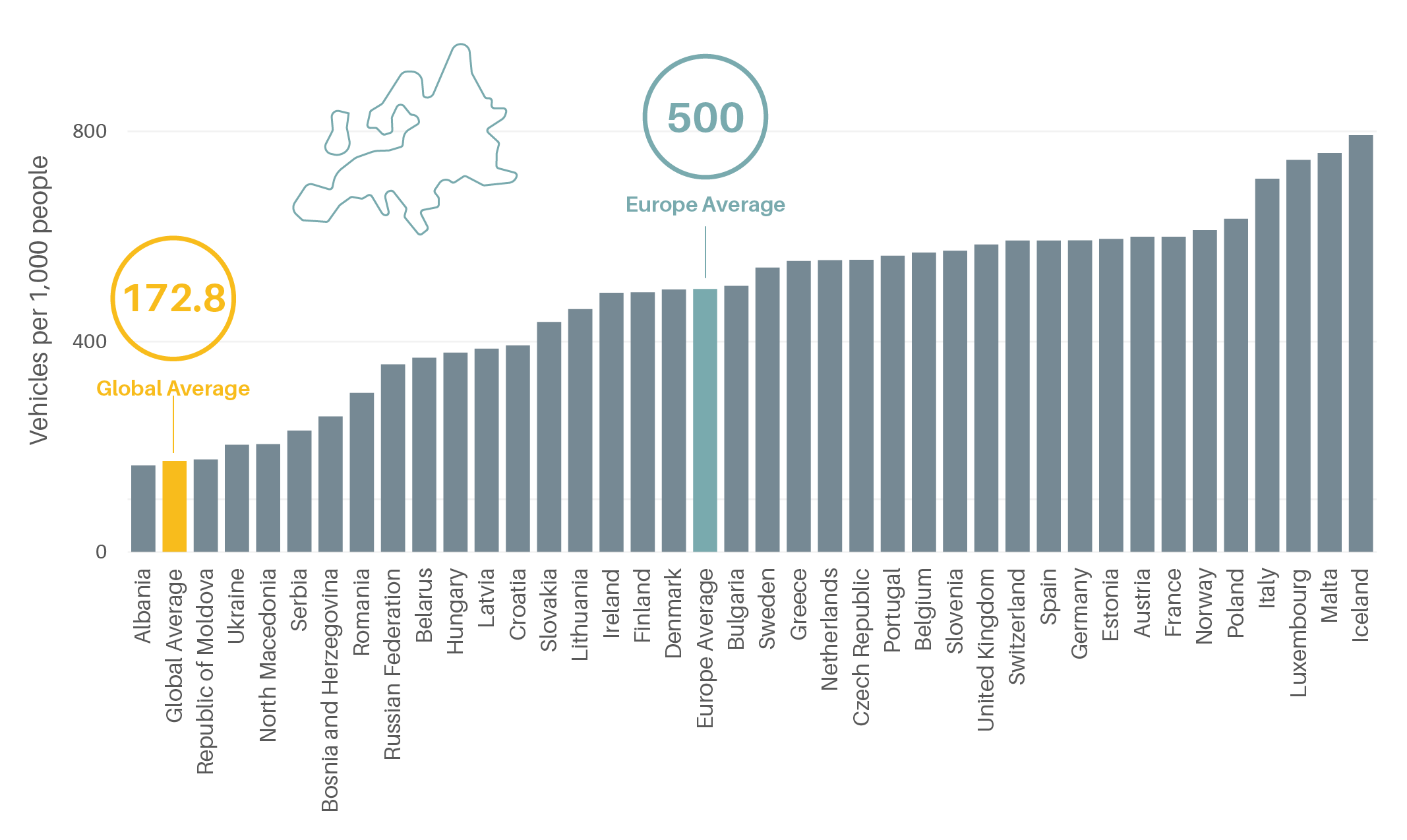
The share of electric vehicles among new car registrations in Europe increased from 2% in 2018 to 3.5% in 2019, but market penetration remains relatively low.
Passenger transport demand in the European Union (EU) reached a record high in 2018, with car travel accounting for more than 70% of passenger demand, and rail travel for nearly 7%.
Freight transport demand increased 11% from 2010 to 2018, with road transport accounting for 73% of this demand, rail for 17% and inland waterways for 6%.
Tram and metro usage reached an all-time high in the EU-27 in 2018, with growth of more than 10% since 2010. Demand for urban and inter-city buses remained stable during this period.
-
Emission Trends
Transport is responsible for nearly a quarter of EU greenhouse gas emissions and is the region’s only sector without significant emission reductions since 2018.
Transport CO2 emissions in Europe remained roughly stable between 2010 and 2019 and accounted for around 18% of global transport CO2 emissions in 2019.
Figure 3.
Per capita transport CO2 emissions in Europe, 2019
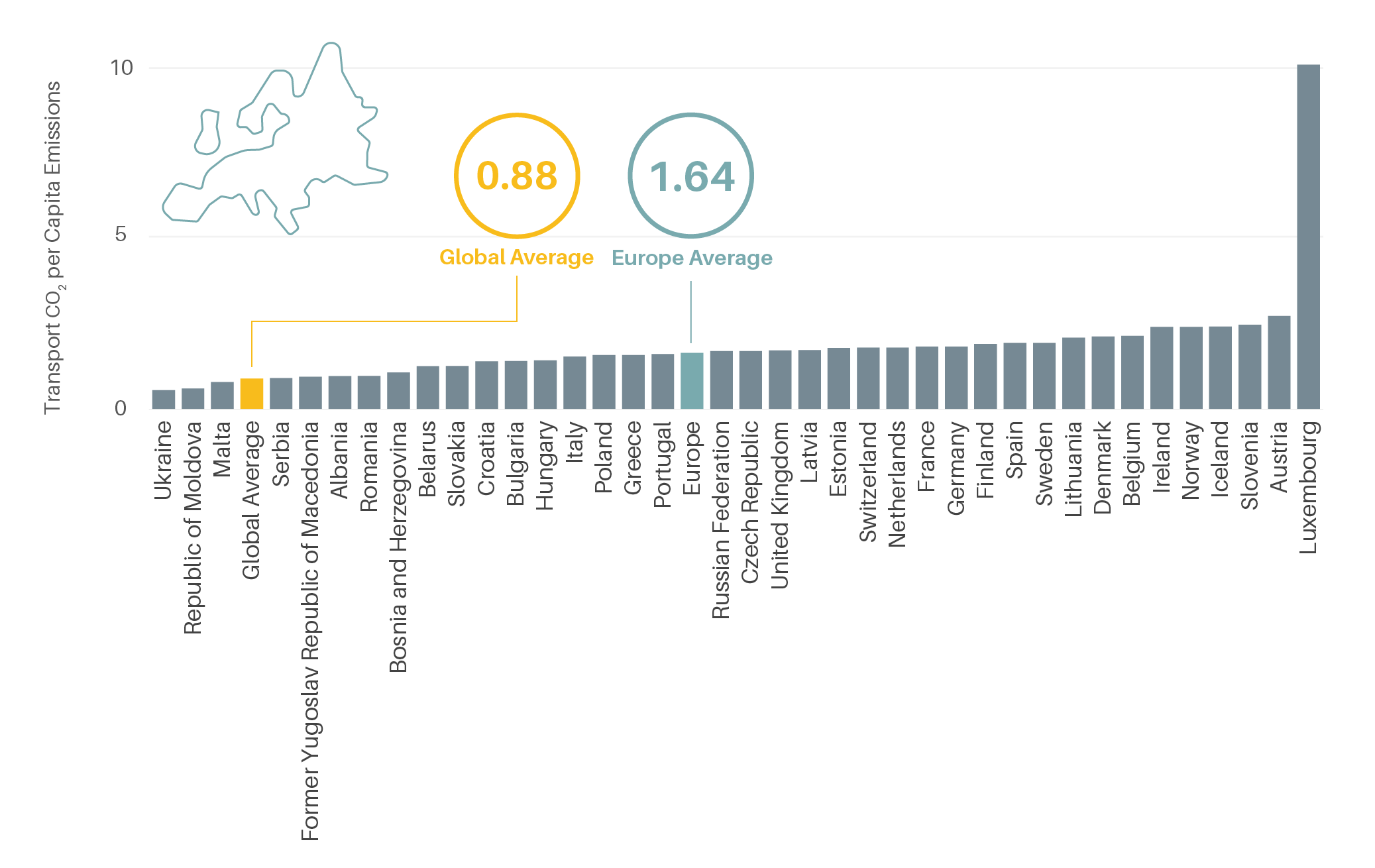
Figure 4.
Change in transport CO2 emissions in Europe, 2010-2019
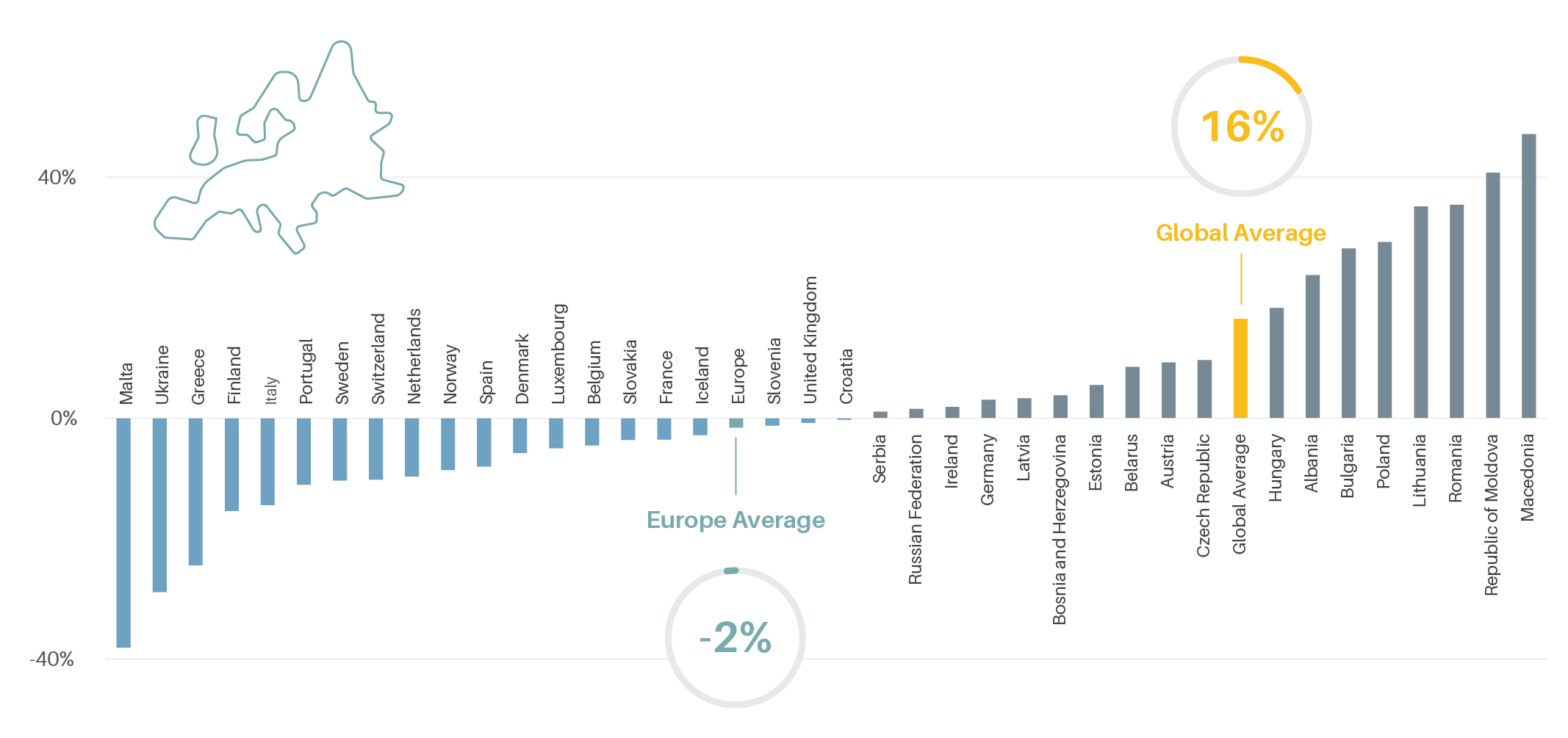
Half of all European countries reduced their transport CO2 emissions between 2010 and 2019, but more than 20% of countries exceeded the global average growth in transport emissions.
Europe has the cleanest vehicle fleet among world regions; however, average CO2 emissions from new cars and vans increased between 2017 and 2019, exceeding the 2021 emission standards for passenger cars by more than 25%.
-
Policy Measures
Individual European countries and the EU have established ambitious transport decarbonisation roadmaps to address rising transport emissions, with the aim of achieving climate neutrality by 2050.
Many European countries have embraced integrated mobility planning to reduce urban transport emissions, and in 2020 the region accounted for 68% of global sustainable urban mobility plans (SUMPs).
Electric mobility is a key target of EU policies for a “green transition” and post-pandemic recovery, and several European countries have announced progressive bans on sales of fossil fuel vehicles.
Europe has emerged as a frontrunner in implementing low-emission zones as an effective strategy to tackle climate change and improve air quality; as of 2020, these zones were present in at least 261 European cities.
With road freight movement in the region expected to grow steadily, low carbon freight and logistics strategies are emerging to help reduce greenhouse gas emissions and to incorporate the emission goals of the European Green Deal.
Mobility as a Service (MaaS), which originated in Europe, is more advanced in the region than elsewhere globally; however, it is still transitioning towards broad market integration and remains far from achieving maximum emission reductions.
Europe has emerged as a frontrunner in implementing low-emission zones as an effective strategy to tackle climate change and improve air quality; as of 2020, these zones were present in at least 261 European cities.
-
Impacts of the COVID-19 pandemic
Prolonged lockdowns and travel restrictions due to COVID-19 contributed to a 61% reduction in public transport demand in Europe in 2020, although the region also experienced a swift shift to active mobility.
By March 2020, most European countries had experienced declines in air passenger transport of 50-70% compared to 2019 levels, with Italy registering the largest drop of 85%.
COVID-19-related declines in daily EU greenhouse gas emissions (compared to business as usual) began in early March 2020 but had almost returned to pre-lockdown levels by the end of July.
Investments have been made in Europe to encourage active modes of transport (walking and cycling) as an effective means to guarantee social distance and promote active lifestyles.
